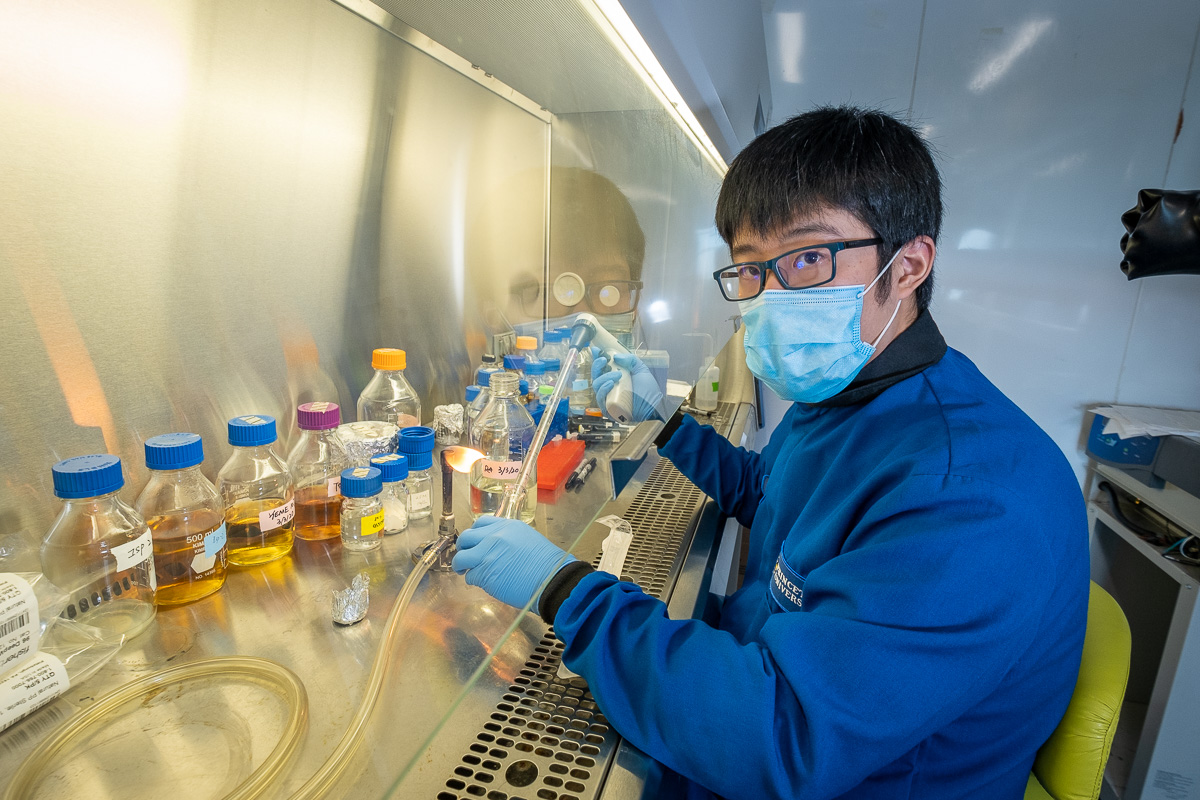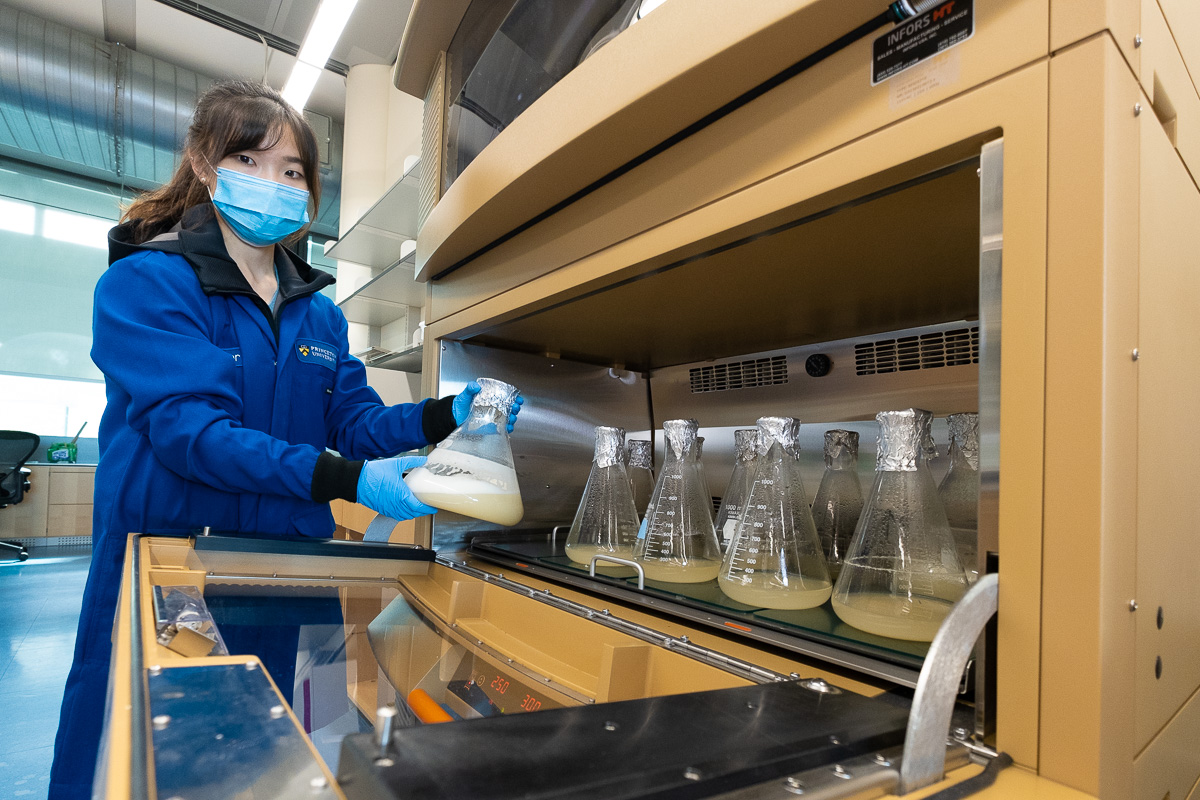Triggering Bacteria in the Service of Medicine
Bacteria, as it turns out, are a lot like us. They get complacent in relaxed, non-threatening environments. And when they’re relaxed, they don’t produce defenses that guard against things that want to kill them, like competing organisms or microbial predators.
But when threatened, bacteria produce a veritable army of molecular defenses. Drilling down into these defenses and the elicitors that trigger them has enabled scientists to discover antibiotics and antivirals, knowledge that might yet prove useful in the fight against the coronavirus.
Armed with recent funding from the National Institutes of Health (NIH) and Princeton University, Department of Chemistry Associate Professor Mohammad Seyedsayamdost is engaging that fight with an approach called High-Throughput Elicitor Screening (HiTES). First introduced by the Seyedsayamdost Lab in 2014, the technology enables researchers to screen, identify, and characterize the natural products that are biosynthesized only when bacteria are under threat.
Seyedsayamdost calls these “cryptic” natural products. They are the defenses Nature itself has devised to counter a certain threat.

Photo by C. Todd Reichart
“More than half of the anti-infectives used clinically come from nature, from natural products synthesized by bacteria, fungi, or plants,” said Seyedsayamdost, a chemical biologist. “These are small organic molecules synthesized and released into the environment where they carry out a variety of functions, one of which is chemical warfare against other organisms.
“These molecules have been honed by evolution to kill a competitor or a virus, exactly the type of thing we want to do in medicine sometimes – kill a pathogen. So, they’ve been a great source of anti-infective agents.”
Third-year graduate student Chen Zhang is working on the project with Seyedsayamdost, coupling HiTES screening with imaging mass spectrometry – a proven method for the detection of small molecules – to discover novel natural products, the biological activities of which can be tested against pathogenic bacteria or viruses like the agent of COVID-19.
In addition, first-year student Esther Han is combining the HiTES approach with antimicrobial activities to directly search for new and cryptic anti-infectives.
“Since every compound has a unique mass signal (as fingerprints are to humans), comparing signals in untreated bacterial cultures to those in ‘elicited’ cultures can easily identify new natural products only present in specific conditions,” said Zhang. “Once identified, follow-up studies can elucidate the biological activity and molecular target of the natural product.”

Photo by C. Todd Reichart
The Seyedsayamdost lab has found that antibiotics themselves are the best elicitors, or, the best triggers for cryptic natural products. Old antibiotics, therefore, can be used to discover new, cryptic ones. This observation was first made with the bacterium Burkholderia thailandensis. In this instance, Seyedsayamdost found that a carefully calibrated Goldilocks dose of the antibiotic Trimethoprim – not too much or it will kill the bacteria; not too little or the bacteria won’t respond – causes the bacterium to synthesize 21 of the 22 natural products that it encodes.
“Burkholderia throws the kitchen sink at you if you treat it with low-dose Trimethoprim,” said Seyedsayamdost.
Seyedsayamdost was motivated to deploy the HiTES technology in the battle against COVID-19 as a way of meeting what he characterizes as the obligation of scientists.
“If you’re working in this research area and you have a chance to contribute even indirectly to a therapeutic, you have an obligation to do so. So from that point of view, I think it’s important to be engaged,” Seyedsayamdost said.
“The other issue is, infectious disease is going to be on the rise. We knew that at the beginning of the century, but this pandemic really drives the point home. This is something that academic scientists need to address, but big pharma needs to deal with, too,” he added. “It’s unfortunate that big pharma has largely gotten away from finding treatments against infectious agents. But I think the coronavirus will be a wake-up call.”
This research is supported by the NIH Director’s New Innovator Award (DP2-AI-124786) and the Princeton Intellectual Property Accelerator Award.
